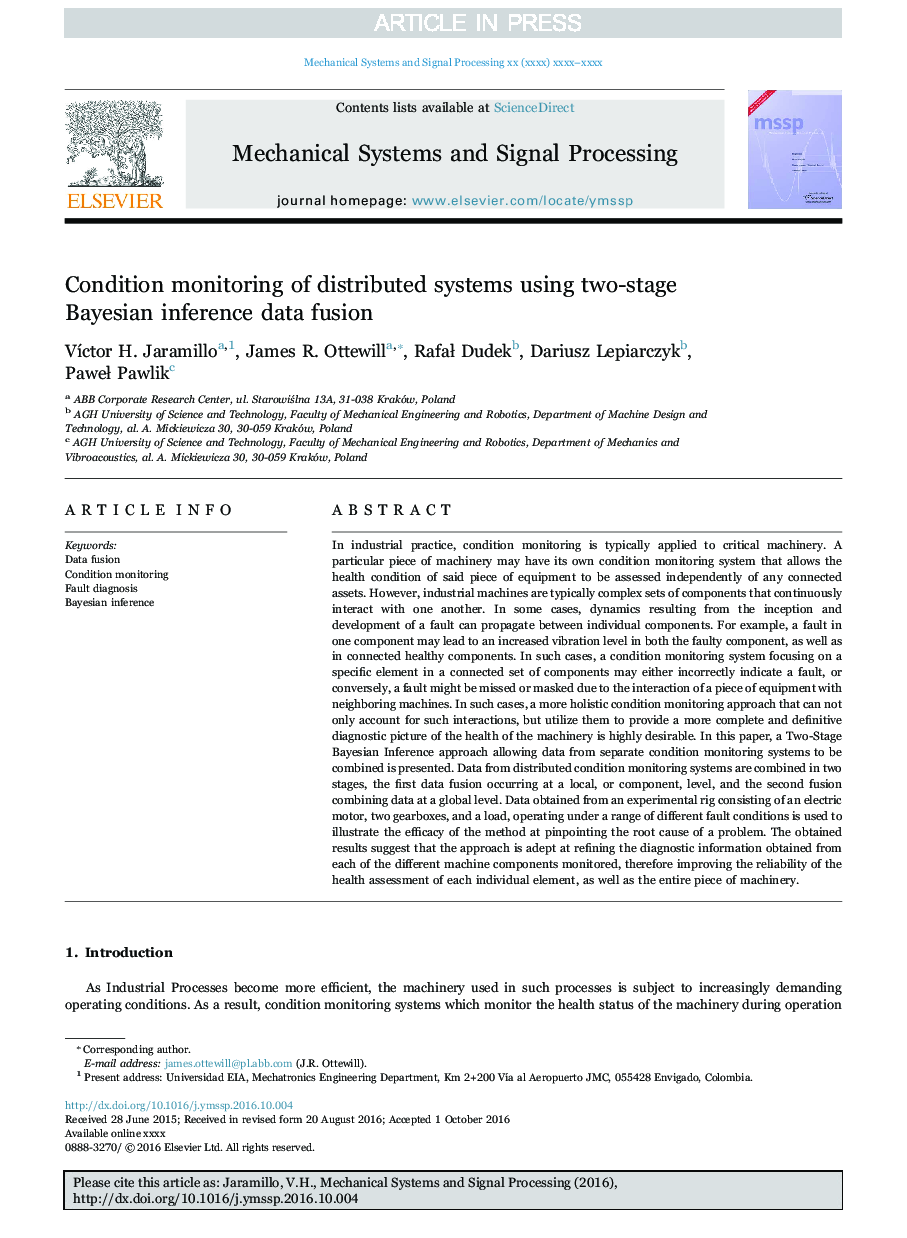| Article ID | Journal | Published Year | Pages | File Type |
|---|---|---|---|---|
| 4977155 | Mechanical Systems and Signal Processing | 2017 | 20 Pages |
Abstract
In industrial practice, condition monitoring is typically applied to critical machinery. A particular piece of machinery may have its own condition monitoring system that allows the health condition of said piece of equipment to be assessed independently of any connected assets. However, industrial machines are typically complex sets of components that continuously interact with one another. In some cases, dynamics resulting from the inception and development of a fault can propagate between individual components. For example, a fault in one component may lead to an increased vibration level in both the faulty component, as well as in connected healthy components. In such cases, a condition monitoring system focusing on a specific element in a connected set of components may either incorrectly indicate a fault, or conversely, a fault might be missed or masked due to the interaction of a piece of equipment with neighboring machines. In such cases, a more holistic condition monitoring approach that can not only account for such interactions, but utilize them to provide a more complete and definitive diagnostic picture of the health of the machinery is highly desirable. In this paper, a Two-Stage Bayesian Inference approach allowing data from separate condition monitoring systems to be combined is presented. Data from distributed condition monitoring systems are combined in two stages, the first data fusion occurring at a local, or component, level, and the second fusion combining data at a global level. Data obtained from an experimental rig consisting of an electric motor, two gearboxes, and a load, operating under a range of different fault conditions is used to illustrate the efficacy of the method at pinpointing the root cause of a problem. The obtained results suggest that the approach is adept at refining the diagnostic information obtained from each of the different machine components monitored, therefore improving the reliability of the health assessment of each individual element, as well as the entire piece of machinery.
Related Topics
Physical Sciences and Engineering
Computer Science
Signal Processing
Authors
VÃctor H. Jaramillo, James R. Ottewill, RafaÅ Dudek, Dariusz Lepiarczyk, PaweÅ Pawlik,
